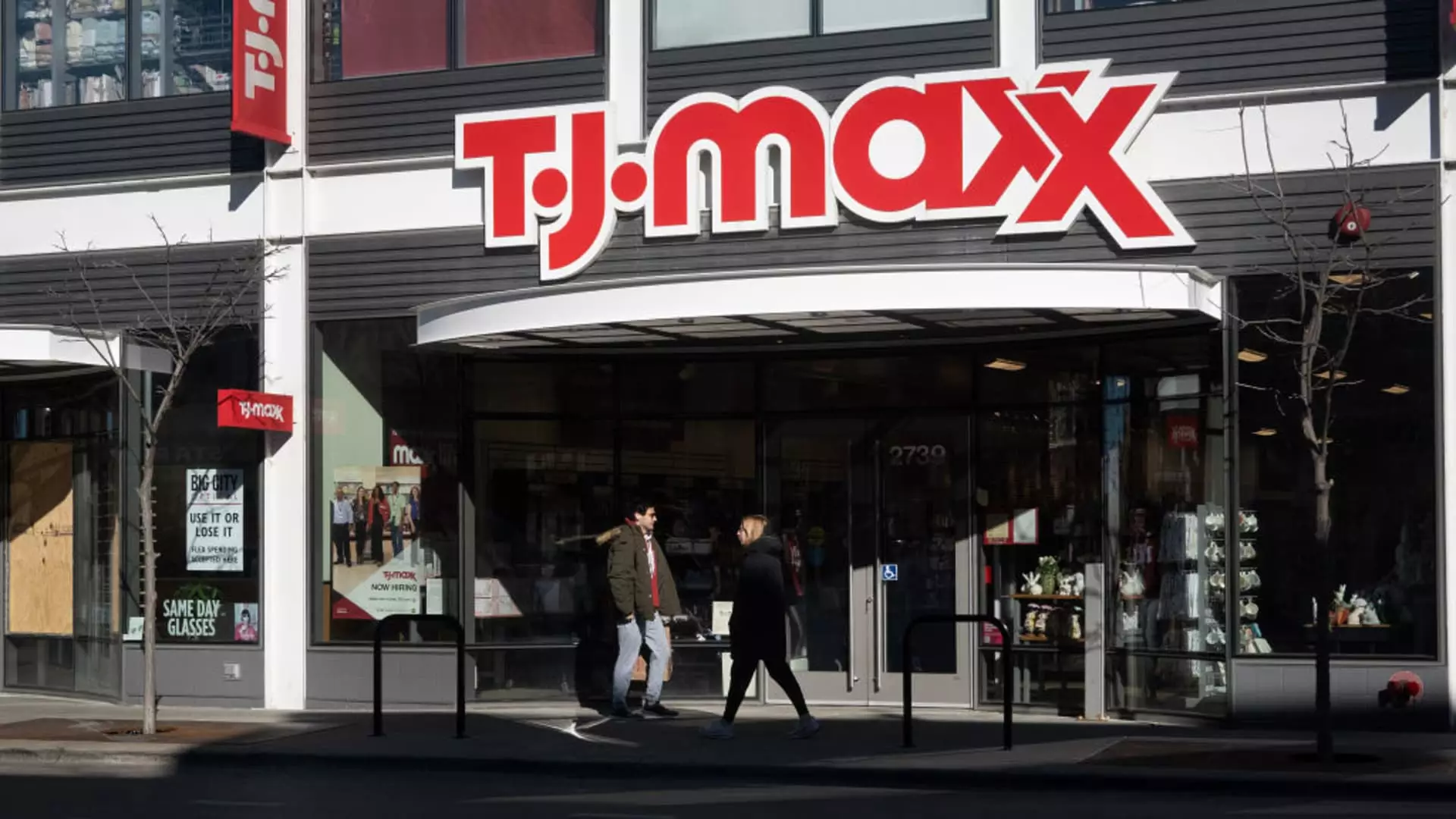TJX Companies, the parent company of well-known off-price retailers such as T.J. Maxx, Marshalls, and HomeGoods, recently presented its financial findings, expressing optimism regarding its holiday season prospects. However, despite reporting robust fiscal third-quarter results, the company’s stock experienced a decline. This contradiction raises pertinent questions about investor sentiment and market expectations concerning TJX’s strategies moving forward. While CEO Ernie Herrman highlighted a “strong start” to the holiday shopping season, the market appeared to react skeptically to the guidance provided for the upcoming quarter.
In its latest quarter, TJX reported an earnings per share (EPS) of $1.14, which eclipsed expectations of $1.09. Revenue also surpassed forecasts, reaching $14.06 billion compared to the anticipated $13.95 billion. This growth, a 6% increase from the same period last year, seems impressive on the surface. Furthermore, net income rose to $1.30 billion, showing a commendable leap from $1.19 billion a year earlier. However, the earnings guidance for the holiday quarter, projected between $1.12 and $1.14 per share, fell short of analyst expectations of $1.18. Such discrepancies between actual results and forward guidance can foster unease among investors, potentially exacerbating concerns about the company’s trajectory.
TJX’s performance was partially attributed to an increase in consumer transactions, reflecting a positive shopping experience that resonates with a broad demographic. Herrman emphasized the importance of the “values and treasure hunt” shopping experience, indicating that consumers are paying attention to not just prices but also the value they receive. This customer-centric approach may have stimulated sales increases, yet the projected earnings offer a more conservative outlook—prompting analysts to scrutinize future sales performance.
Despite the potential for holiday sales growth, with comparable sales expectations of 2% to 3% in line with previous projections, analysts point out that these figures do not exhibit the aggressive growth that might have been anticipated from a company in TJX’s position. This seemingly moderate growth forecast contrasts sharply with the enthusiasm expressed during their quarterly announcement.
Examining the individual divisions within TJX reveals a more nuanced picture. The Marmaxx division, which comprises T.J. Maxx, Marshalls, and Sierra, achieved a mere 2% increase in comparable sales, notably down from 7% in the previous year. HomeGoods, another key player, saw a comparable sales increase of just 3%, down from 9% a year earlier. These figures not only indicate a slowing growth rate but also suggest that TJX may need to recalibrate its strategies to sustain momentum.
Contrary to this trend, TJX International showcased notable resilience with a 7% growth in comparable sales during the quarter, up from 1% a year ago. This division’s success may present a beacon of hope for TJX, especially as the company prepares for an expansion into Spain with its TK Maxx brand in 2026. Such international endeavors may diversify revenue streams and counteract slowing sales domestically, hinting at a forward-thinking strategy aimed at stabilizing growth.
An essential aspect of TJX’s performance relates to external factors like weather patterns. Analysts had expressed concerns that remarkably warm October weather could adversely influence sales, particularly in the apparel sector. Off-price retailers, in particular, are often susceptible to this kind of weather-related fluctuation, as low-income consumers tend to purchase seasonally relevant items only as necessary. Surprisingly, however, the warmer weather seems not to have significantly impacted TJX’s sales, following an analysis that warrants further investigation into consumer purchasing behavior.
Ultimately, while TJX Cos. boasts impressive third-quarter results and looks to capitalize on upcoming holiday shopping trends, the lingering concerns regarding earnings guidance and comparative sales growth may reflect broader market anxiety. As the company adapts in response to consumer behavior, competitive pressures, and external environmental factors, its ability to manage expectations will be crucial. By diversifying both product offerings and geographical presence, TJX has the potential to capture a wider audience, continuing its tradition as a leader in the off-price retail sector. However, sustained vigilance and strategic adaptivity will be vital as it navigates the complex landscape of modern retail, especially as competition within this space intensifies.

